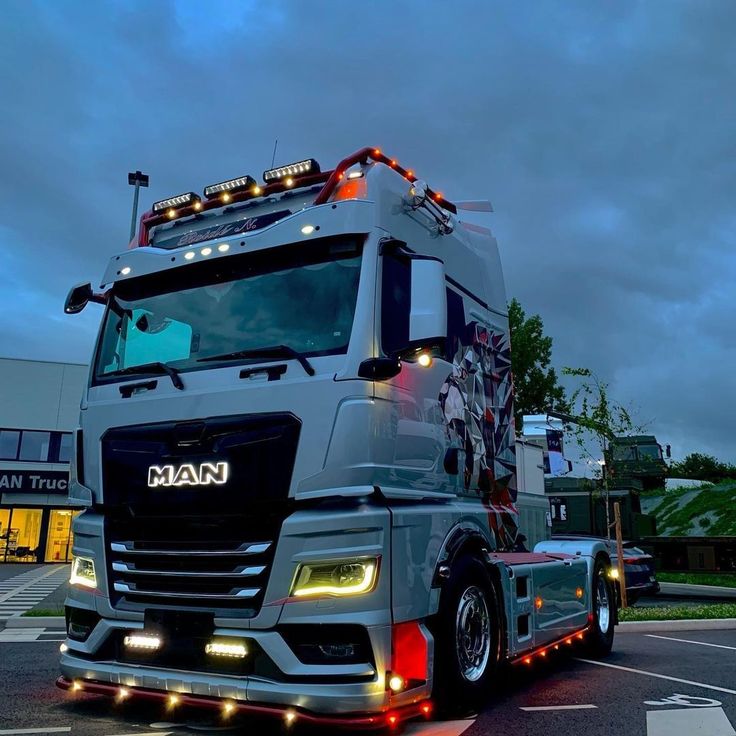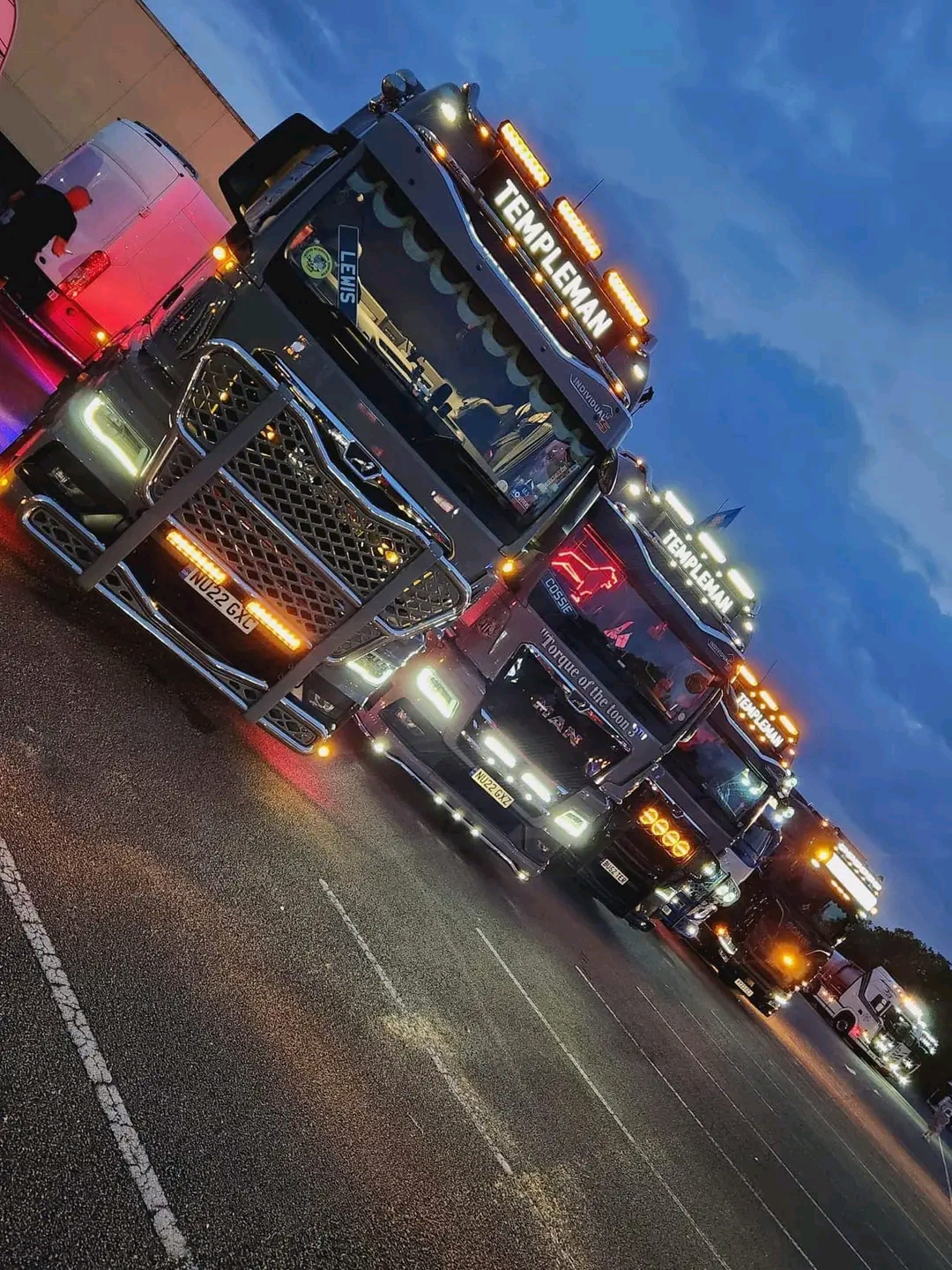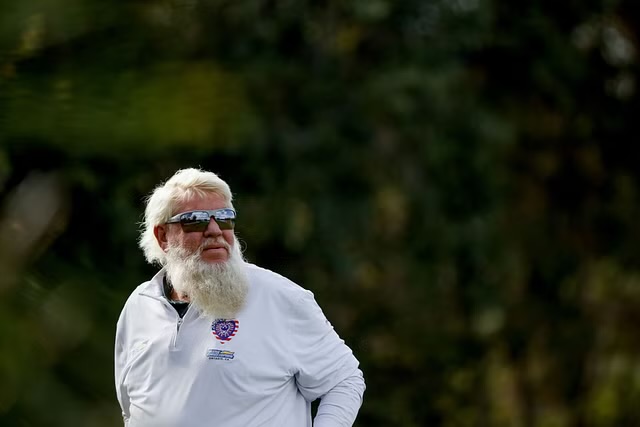Following the Czech Cybertruck’s example, now there’s a rubber bumper-pimped Tesla truck attempting to be certified for use on British highways. This time, however, the chances of success look slim.
Car customizer to the stars Yianni Charalambous, owner of luxury vehicle wrapping workshops in England, is aiming to legalize a Tesla Cybertruck for driving in the UK. If successful, this would be the first Cybertruck allowed on British roads, and would join the rubberized Cybertruck legalized for use on Czech roads through the fitting of skinny bumpers over the electric pickup’s sharp edges.
To the dismay of road safety organizations, the minimally altered Czech Cybertruck passed an individual vehicle approval test, one of the ways to legalize low-volume imported cars in the EU.
US automotive design standards are lax compared to those of Europe, where manufacturers must meet tough safety-first rules before mass-market “type approved” cars can be registered for use on public roads.
Despite Brexit, the UK still follows European type-approval motoring standards for mass-market cars, as well as adhering to individual vehicle approval (IVA) rules for exotic imports.
Even though it helped design them, the UK is not yet signed up to the EU’s vehicle safety measures contained in the two-year-old General and Pedestrian Safety Regulations (GSR). From July this year, all new cars in the EU must be fitted with automated emergency braking systems, intelligent speed assistance, and other GSR-compliant safety technologies.
A long-existing EU-wide pedestrian-safety directive that the UK does follow prevents the sale of passenger vehicles that “exhibit sharp external projections.” Elon Musk’s
edgy-in-more-ways-than-one stainless steel pickup therefore can’t be sold in Europe or the UK, a snafu recognized by Tesla’s VP of vehicle engineering Lars Maravy who last year told TopGear.nl that the Cybertruck falls foul of the European regulations requiring a rounding of 3.2 millimeters on protruding parts. “It is impossible,” he said, referring to the Cybertruck’s sharp paneling, “to make a rounding of 3.2 millimeters on a 1.4-millimeter sheet of stainless steel.”
European safety standards also state that, to prevent causing injury to those outside cars, the front end of a passenger motor vehicle can’t be angular. The Cybertruck is almost nothing but angles.
Yianni Charalambous has already started pimping his Cybertruck, despite it not being legal on British roads. Courtesy of Yianni Charalambous
“If we get to register this with English [number] plates, you’re going to see an influx of these cars in the UK,” predicts Charalambous in one of three videos he has posted online about his quest to get his recently-bought Cybertruck through an IVA test. These fiendishly difficult-to-pass tests are administered by the UK government’s Driver and Vehicle Standards Agency, or DVSA, an agency of the UK’s Department for Transport.
There are 21 IVA test centers throughout the UK, but only 14 can evaluate a Cybertruck. This is due to the pickup’s heft—seven of the IVA test centers can’t evaluate vehicles weighing more than 3,500 kg (7,716 lbs). The Tesla Cybertruck owner’s manual states that Musk’s truck has a curb weight of 6,634 lbs (3,009 kg), but that’s with no occupants or cargo. The truck’s Gross Vehicle Weight Rating (GVWR)—curb weight plus the maximum allowed weight of cargo and passengers—is 8,834 lb or 4,007 kg.
The gross weight bumps the Cybertruck into a UK driving license category above the one for cars alone. According to the UK government, 68 percent of drivers wouldn’t be licensed to drive Cybertrucks, although Charalambous himself is an outlier—he has an all-categories UK driving license.
Wealthy thanks to his automotive businesses and to a multi-million following across his social media channels, the 48-year-old once owned a Tesla Model X Plaid. Still, he is mainly known for his love of gas-powered supercars, which his Yiannimize automotive business tricks out with custom wheels and shiny vinyl wraps. He’s also no stranger to spending serious cash on cars, so paying for a head-turning Cybertruck likely wouldn’t have been much of a stretch.
Airfreighted from the US to Italy, shipped to Albania, and then driven to the UK with Albanian plates by an Albanian national on Albanian insurance, the foundation-series Cybertruck was acquired by Charalambous last month. As his first video reveals, he knew that the sharp-edged pickup didn’t meet EU and UK pedestrian safety standards.
Two subsequent videos cover his quest to pass UK IVA testing, not a task for the faint-hearted. A 63-page IVA guide is slimline compared to the 330-page manual that IVA test centers must follow. On a British automotive forum, an IVA-seeking kit-car maker wrote of his “complete unending dread” when studying this manual, calling it the “worst book ever.” The IVA process, he concluded, was “insane.”
Perhaps only partly aware of the IVA headaches to come, Gus Miller, creative director at Yiannimize.com, said the business would plow on. “We’re just going to see what is possible,” he told WIRED, adding that “Yianni has a ton of contacts in the car world.”
Do any of them have IVA expertise though? “I do not know whether this vehicle could ever be legalized in the UK,” an IVA specialist tells WIRED. The specialist, who prefers to remain anonymous, works for a business that has worked on IVA modifications for more than 20 years. She stresses that putting a Cybertruck through an IVA examination would require “very deep pockets” just to determine what the “government says is not right with this vehicle.”
“It’s critical that [IVA tests are] really strong,” she adds, “otherwise you would have vehicles on the road that are a danger to the public.”
There are different IVA tests for various classes of vehicles. The DVSA would not reveal which category the Cybertruck would be evaluated under, but the M1 category for passenger vehicles looks the most applicable, with a weight limit almost 2,500 kg higher than the Cybertruck’s gross weight of 4,007 kg.
No doubt aware of the IVA modifications that succeeded in the Czech Republic, the Albanian importer of Charalambous’ Cybertruck fitted similar custom-made rubber bumpers to the electric pickup’s sharp-edged panels. “Alban” also advised Charalambous on some of the other modifications that he said would be required, such as switching from US-style red turn indicators to UK- and EU-style amber ones.
Three weeks after starting the modifications process, WIRED asks Miller when the Cybertruck might be ready for its IVA test. “We still don’t know,” he says. “We will film with it some more before Christmas,” Miller adds, “but whether it will be IVA ready by then is another question.”
One of the elements that has to be changed on the Cybertruck to make it legal in the UK is the color of the indicator lights at the rear. Courtesy of Yianni Charalambous
It’s no surprise Charalambous and crew are having difficulties legalizing the Cybertruck. “These long, unbroken sheets of metal, with the sharp lines and a humongous windshield, make me think there’s going to be some real issues with potentially passing safety regulations, especially outside the US,” Mike Ramsey, an analyst with the tech research and consulting firm Gartner, told WIRED last year.
Musk has stated that the Cybertruck’s silhouette was designed to be aggressive. “It is an armored personnel carrier from the future,” wrote Musk in October 2019, and then again in November 2023, and twice this year.
The Cybertruck’s militaristic futurism may excite Musk, but in risk-averse markets such as the EU and the UK, any new technologies must be vetted not by early-adopter customers but by accredited labs.
There are, therefore, multiple hurdles for Charalambous and his team to clear before they can get the Cybertruck through a UK IVA test. Cybertrucks have innovative features that aren’t on any other now long-in-the-tooth Tesla cars. For instance, no UK Tesla showroom can support technologies such as the Cybertruck’s steer-by-wire system.
The pickup’s steering wheel has no physical connection to the wheels. Instead, hand movements on the “yoke” are translated into electrical impulses replicated downstream by actuators. Low-latency comms then ensure that the wheels repeat the steering commands with minimum lag.
The Cybertruck isn’t the first production motor vehicle to make use of this aviation-style tech—the Infiniti Q50 had steer-by-wire back in 2013—but, says the IVA manual, “vehicles fitted with complex drive by wire … cannot be assessed by inspection.” This isn’t a deal-breaker, however, so long as “documentary evidence” of the steer-by-wires actuation is provided.
That will likely require more than the scant illustrations in the Cybertruck owner’s manual. The M1 IVA document adds that “when the vehicle is driven at speeds above 10mph, there must be a degree of steering ‘self-centering’ evident.”
According to a YouTube video uploaded by Salt Lake City tech tester Quinn Nelson, the Cybertruck’s steering wheel does not self-center. “In certain wheel positions [the steering wheel] just never returns to center,” Nelson says before demonstrating that “if you go over bumps and cracks and crowns on the road or you hit a curb, [the Cybertruck] stays directly straight.”
A steer-by-wire yoke failing to self-center may be fixable with an over-the-air update from Tesla. But such OTA updates are released in North America only; Charalambous won’t be able to access them in the UK. Nor will he be covered by Tesla’s warranty, and he won’t be notified about Cybertruck recalls, of which there have been six already, with one of them requiring Tesla shop time.
Upon learning of any Cybertruck recalls in the US, Charalambous’s company would have to comply with the UK government’s Vehicle safety defects and recalls code of practice, which requires following the onerous rules of the EU’s RAPEX (Rapid Exchange of Information System) recall program. It could prove time-consuming and costly to convince the DVSA that any updates or recalls make the Cybertruck safe to drive again, and that’s even if Charalambous can obtain the software updates in the first place, or if any required works can be actioned outside of North America.
“In the case of a potential safety defect affecting products imported by an independent importer, that importer shall bear the responsibilities of [a] producer,” the DVSA told WIRED, adding administrative complexity to Charalambous’ ownership of the Cybertruck. This means Charalambous’ company is treated like an auto manufacturer and would be liable for any recalls concerning his Cybertruck.
His Cybertruck could also fail an M1 IVA test for more mundane reasons, including the wrong kind of glass. At launch, Tesla design chief Franz von Holzhausen famously shattered the prototype Cybertruck’s Armor Glass with the spirited throw of a metal ball, so perhaps the glass isn’t that tough and it’ll therefore be moot that the IVA manual states that “vehicles having a maximum design speed greater than 40 km/h (25 mph) may not be fitted with a toughened windscreen.”
Crucially, the rubber bumper that seemingly helped the Czech Cybertruck gain its IVA certificate might fail to pass muster in the UK. The UK IVA manual states, “items such as covers (rubber or otherwise) that are held in place by being stretched on or attached by double-sided tape or other inadequate means, rubber hosing, pipe lagging etc, are not considered acceptable methods or materials.”
There’s also doubt whether the Cybertruck’s non-standard crumple zones would be allowed in the UK. The M1 IVA test requires vehicles to meet the EU’s frontal impact directive 96/79/EC, in which vehicles have to be type-approved. Musk has boasted that, with a Cybertruck, “if you are ever in an argument with another car, you will win.”
That’s likely because of his angular pickup’s rigidity. The Cybertruck, says Tesla, has an “Ultra-Hard 30X Cold-Rolled stainless-steel structural skin” that provides “ultimate durability and passenger protection.” Without EU type approval, it’s unclear whether what Tesla claims is a “nearly impenetrable exoskeleton” would provide adequate crumple zones, safety features potentially life-saving to the occupants in all vehicles in any crash.
Used in the auto industry since the 1950s, crumple zones deform in a crash and absorb the kinetic energy from any collision in a controlled manner. The Cybertruck’s crumple zones might provide a reduced level of energy-dissipating protection compared to the industry norm, something Tesla disputed in a post on X. “It’s not about the size of your crumple zone,” snarked Tesla, which was contacted for this piece, “it’s about how you use it.”
Yianni Charalambous’ Cybertruck in a state of disassembly as he attempts to make it fitting for UK roads. Courtesy of Yianni Charalambous
Tesla claims that the Cybertruck’s front underbody casting is designed to break into small pieces when in a high-speed collision. “This helps reduce occupant impact by absorbing and dispensing energy,” Tesla stated.
“We are highly confident that Cybertruck will be much safer per mile than other trucks,” claimed Musk in December last year. In the same posting on X, he also wrote that the Cybertruck would be safer than other trucks for pedestrians, a claim Tanya Braun, director of policy and communications at the UK pedestrian organization Living Streets, is not convinced by.
“The Cybertruck’s weight, stiff structure, and sharp design have raised valid concerns,” she tells WIRED. “Any loophole allowing these vehicles onto [UK] streets needs to be quickly closed.”
“It would be hugely disappointing if a backdoor were to be opened which allowed vehicles bringing an increased risk of harm to UK streets and roads,” agrees Margaret Winchcomb, deputy executive director of PACTS, the Parliamentary Advisory Council for Transport Safety, an expert body for more than 100 UK transport organizations.

“Allowing vehicles for which the safety of others appears to be an afterthought would be a large step backward,” she adds.
Although Tesla has made bold safety claims about the Cybertruck and released its own crash-test-dummy footage, no independent bodies have crash-tested the vehicle. US regulators rely on auto makers to self-test and certify their adherence to safety norms.
The federal National Highway Traffic Safety Administration (NHTSA) and the insurance industry-backed Insurance Institute for Highway Safety (IIHS) carry out crash tests on only some vehicles. The expense is too great for these organizations to test all vehicles, so choices are made based on sales volumes.
“While [the Cybertruck] has created a lot of buzz, it’s unlikely we would invest resources to test it unless it were selling in numbers comparable with other popular large pickups,” says IIHS media director Joe Young.

“Without testing the Cybertruck, I can’t comment on the effectiveness of its crumple zones,” he stresses. “For now, our concerns around its design are limited to the issues we’ve raised with other EVs. It’s very heavy, and it’s very quick.”
Because of what it calls the Cybertruck’s “unusual design,” the UK’s Department for Transport (DfT) tells WIRED that it “would not like to predict” whether the pickup would get a DfT-administered IVA pass.
“The IVA scheme was designed for [small- and medium-sized businesses] involved in specialist vehicle conversion or importation,” continues the statement to WIRED, “and was created long before the Cybertruck was conceived.”

Extrapolating from the DfT’s carefully calibrated comments, Charalambous might be wasting his time and money trying to pass the IVA test. “The vehicle has advanced technology which may not be designed to meet the rules that apply in the UK,” warns the DfT statement.
In his videos, Charalambous drives through southeast England in his Albanian-plated Cybertruck. If he’s caught doing this by a knowledgeable police officer, Charalambous could be fined. “A UK resident cannot drive a vehicle displaying foreign number plates in the UK,” confirmed the DfT statement, saying that an “imported car must not be driven on foreign number plates by a UK resident, except to and from [an annual safety check and a] pre-booked IVA [appointment].”
In his third video, Charalambous said he was legally allowed to drive his Cybertruck in the UK because the Albanian seller had provided him with a green card, an international certificate of insurance issued in Albania. Again, this is a no-no says the DfT: “Driving an unregistered vehicle would render any insurance invalid.”
Only time—and a lot of money—will determine whether Charalambous succeeds at legalizing his UK-based Cybertruck, but the odds are against it.








